
Although the best camera phones have done irreversible damage to the compact camera market as a whole, there are still some sectors that continue to perform fairly well and are even bringing out new models from time to time.
The bridge camera is an example of that. Generally, they have the classic form factor of a “proper” camera, while also giving you a much longer optical zoom than any smartphone, as well as traditional handling and manual control.
With the Kodak PixPro AZ405, you get a 20.6MP 1/2.30-inch CMOS sensor. Many smartphones nowadays actually have bigger imaging sensors, but, the key differentiator here is the AZ405 offers a 40x zoom. That’s equivalent to 24-960mm in 35mm terms. The corresponding apertures are f/3 at the wide-angle end and f/6.8 at the telephoto end.
While it’s true that this camera is unlikely to end up on our list of best bridge cameras, it does have a lot of appeal considering its super-low price point. It’ll set you back just £199 / $199 / AU$399, making it a bit of a bargain in camera terms.
Perhaps if you’re brand new to photography, or looking for something to extend the capabilities of your smartphone, it could be a tempting proposition. But let’s find out how well it works…
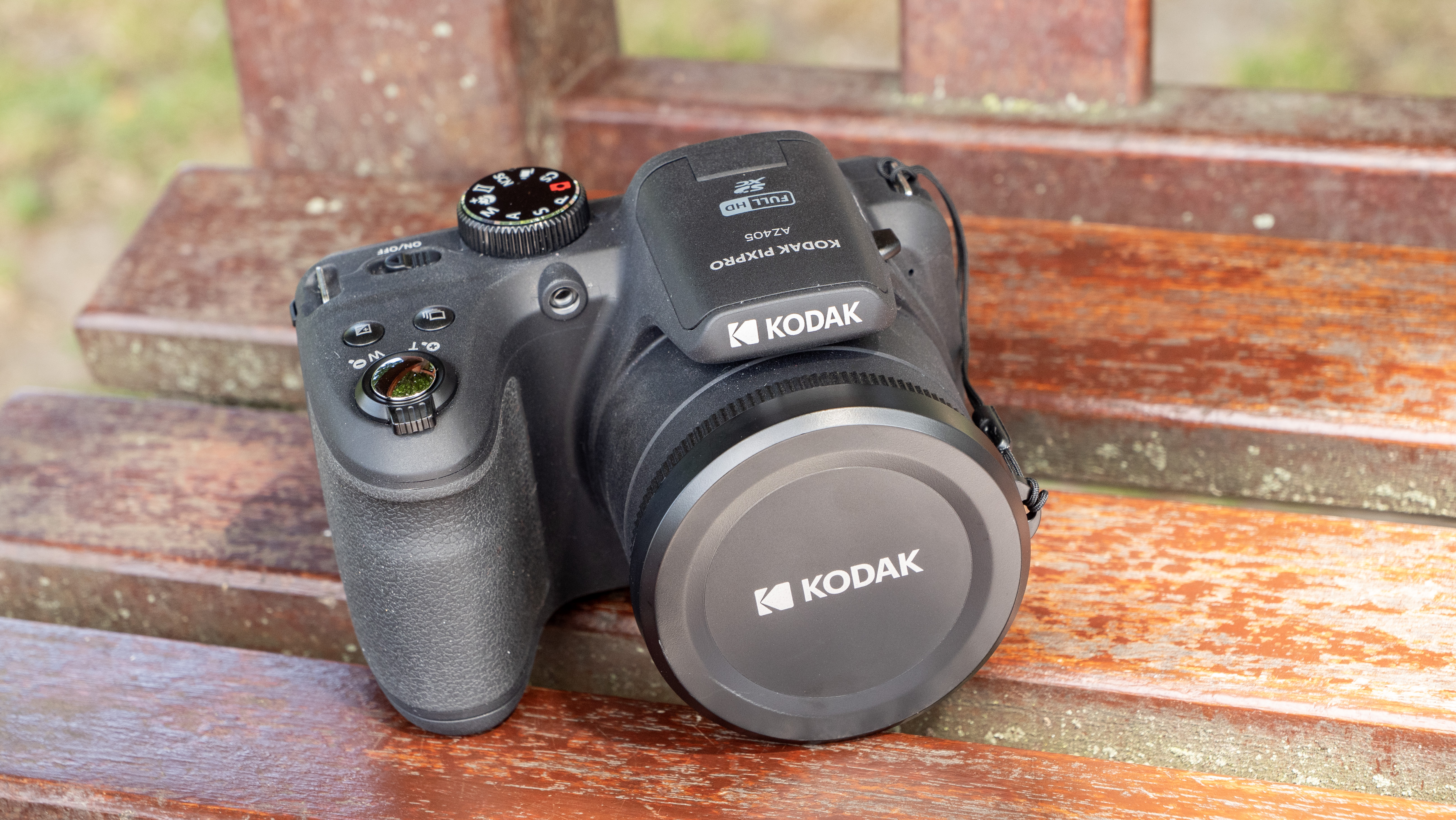
Kodak PixPro AZ405: Specifications
Kodak PixPro AZ405: Price
The Kodak PixPro AZ405 is available to buy in multiple territories right now for $199 / £199 / AU$399. There are sometimes deals and discounts to be found in various locations, which are usually time-limited. Shipping costs vary depending on your location.
Launched in 2022, the AZ405 is a couple of years old, but it’s still a current model in Kodak’s line-up. You’ll struggle to find much else new for under £200, except for others in Kodak’s range, including the AZ255. You might be able to find other comparable bridge cameras for a similar price second-hand.
For those just starting out in “proper” photography, something like this can feel like a tempting idea at its low price. However, it might also be worth considering spending a little bit more to get something that you won’t outgrow so quickly if you can.
Kodak PixPro AZ405: Design & Handling
As is the way with bridge cameras, the AZ405 uses a ‘miniaturized’ DSLR type form factor, which is probably one of the reasons why this sector of the market continues to appeal. It has a chunky grip and employs a traditional control layout.
It’s not what you’d call heavy, but it feels solidly built and sturdy in your hands. The grip has a textured coating with moldings to fit your fingers appropriately.
The shutter release is found at the top of the grip, with a zoom rocker switch around it. With this you push left to zoom out, and right to zoom in. If you carry on pushing in the right direction, you’ll use digital zoom once you’ve reached the full 40x optical option.

Around the zoom lens is a textured ring. However, this is static and doesn’t do anything – it’s there for looks only, which is a shame. At its full extension of 40x, the lens sticks out quite a bit from the camera body, but it’s fairly light so it doesn’t make it feel unbalanced.
Buttons on the top of the camera include an on/off switch, a button for changing the drive mode, and an exposure compensation button. There’s also a mode dial, where you can choose between different automatic and scene modes, as well as manual and semi-automatic modes like aperture priority. A flash is released by pushing a button on the side of the flash housing.
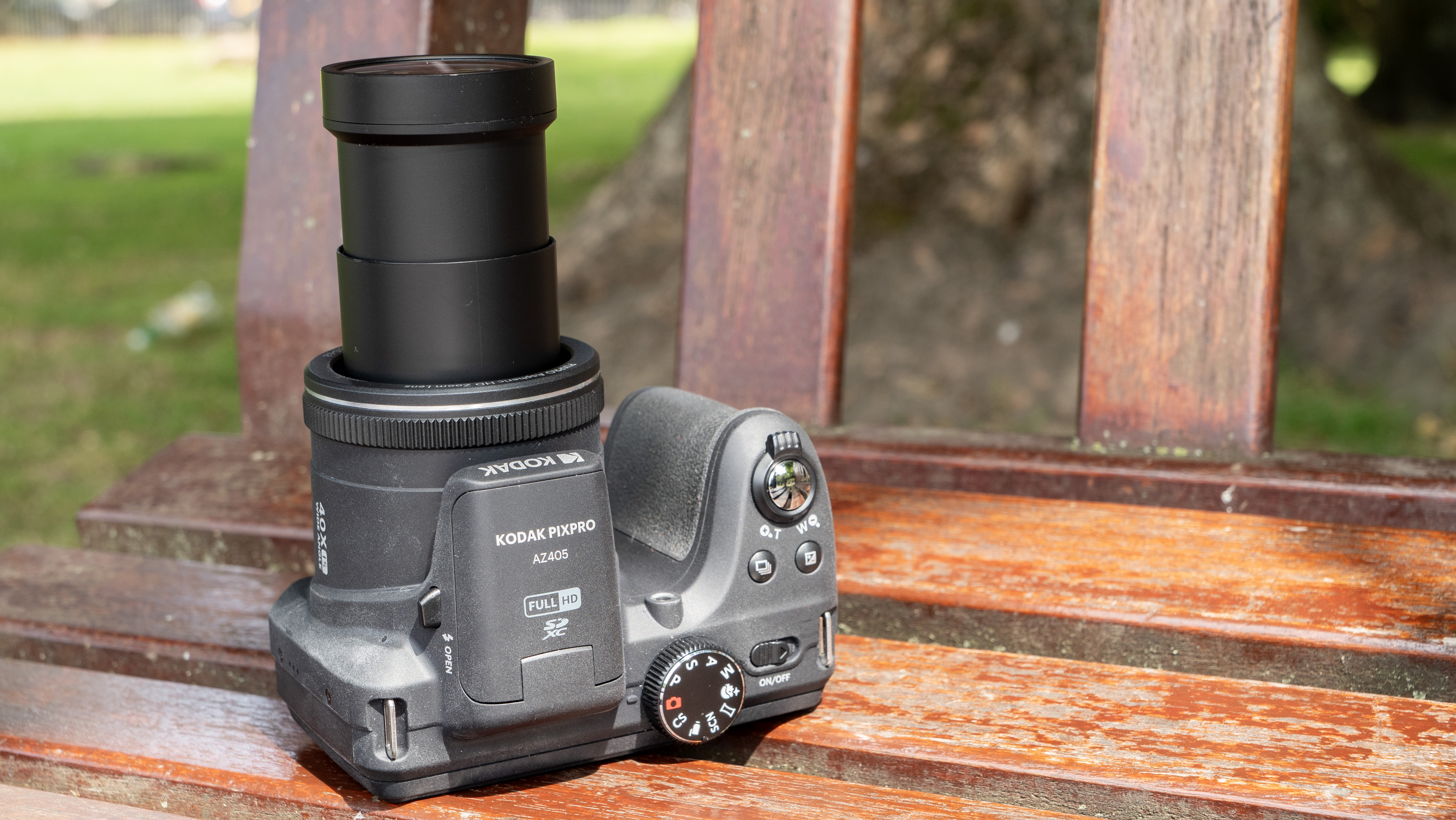
On the back of the camera, all of the buttons are grouped on the right-hand side for easy one-handed use. There’s a video record button, a menu button, a macro button, and others that are mostly self-explanatory. The menus themselves are a bit tricky to get to grips with – at least at first. Some aspects of operation are also a bit odd, for example, to change the aperture in aperture priority requires a press of the exposure compensation button, then moving between the different options presented, and finally using the up and down arrows to make a change. Besides this, there are only two apertures to choose from at any given focal length, too.
Using the camera in other ways is quite a laborious process at times. Switching it on you’ll find you need to wait 2-3 seconds before it is ready, and there’s also a short delay between pushing the shutter release button and the image being taken.
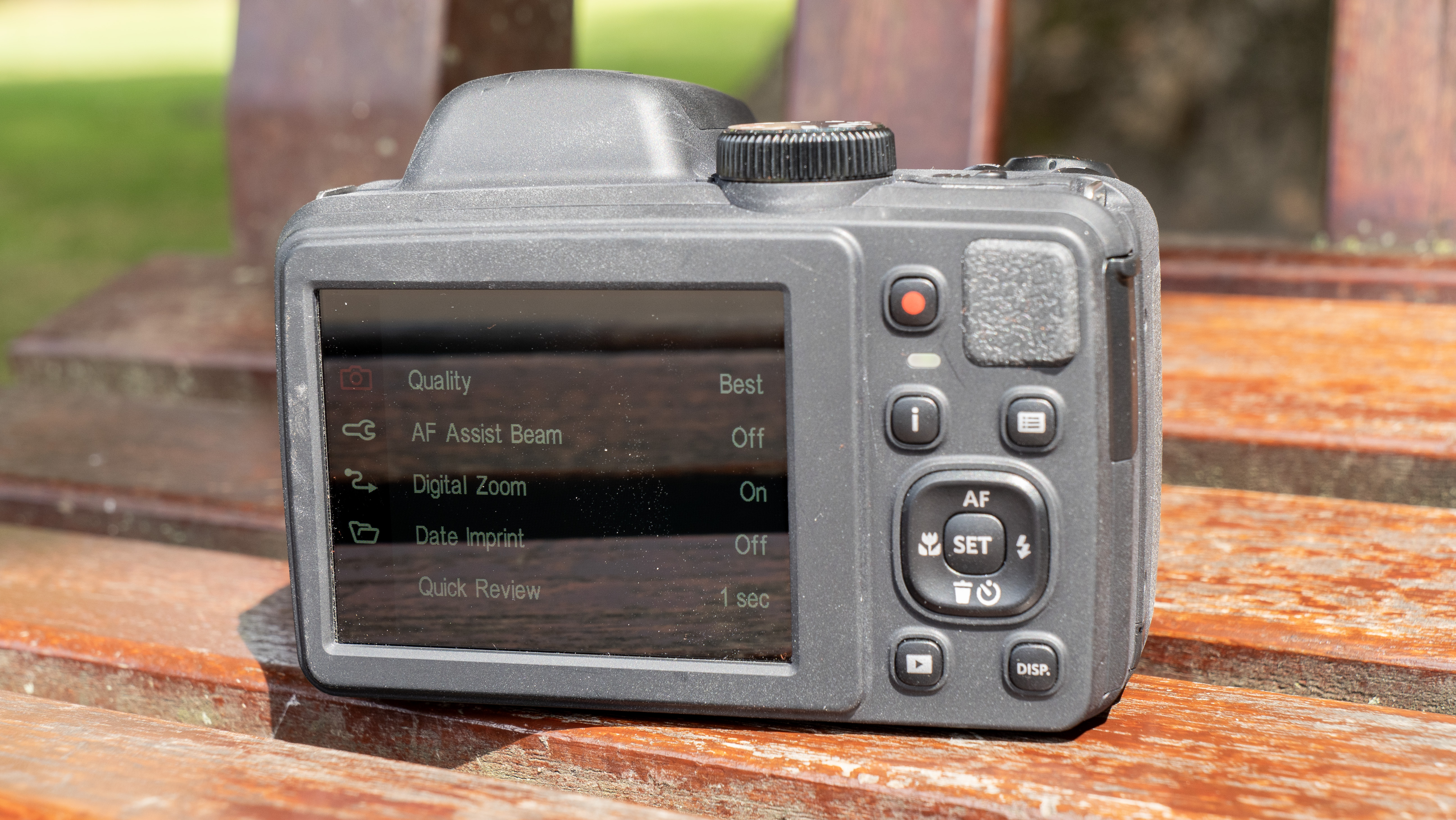
There’s no viewfinder, but I wouldn’t really expect to find one at this price point. The screen is a decent size, but it has an average resolution and it’s not particularly bright. In sunny conditions, it can be difficult to see the screen well for composition, so you may often find yourself shooting ‘blind’.
The batteries used are AA, which on the plus side means you can pick them up anywhere – that can be useful when traveling for example. However, it can also add a lot of cost to the operation of the camera, unless you invest in some rechargeable AAs. The ordinary batteries I used as part of this review lasted a couple of days of reasonably heavy use though, which is a positive.
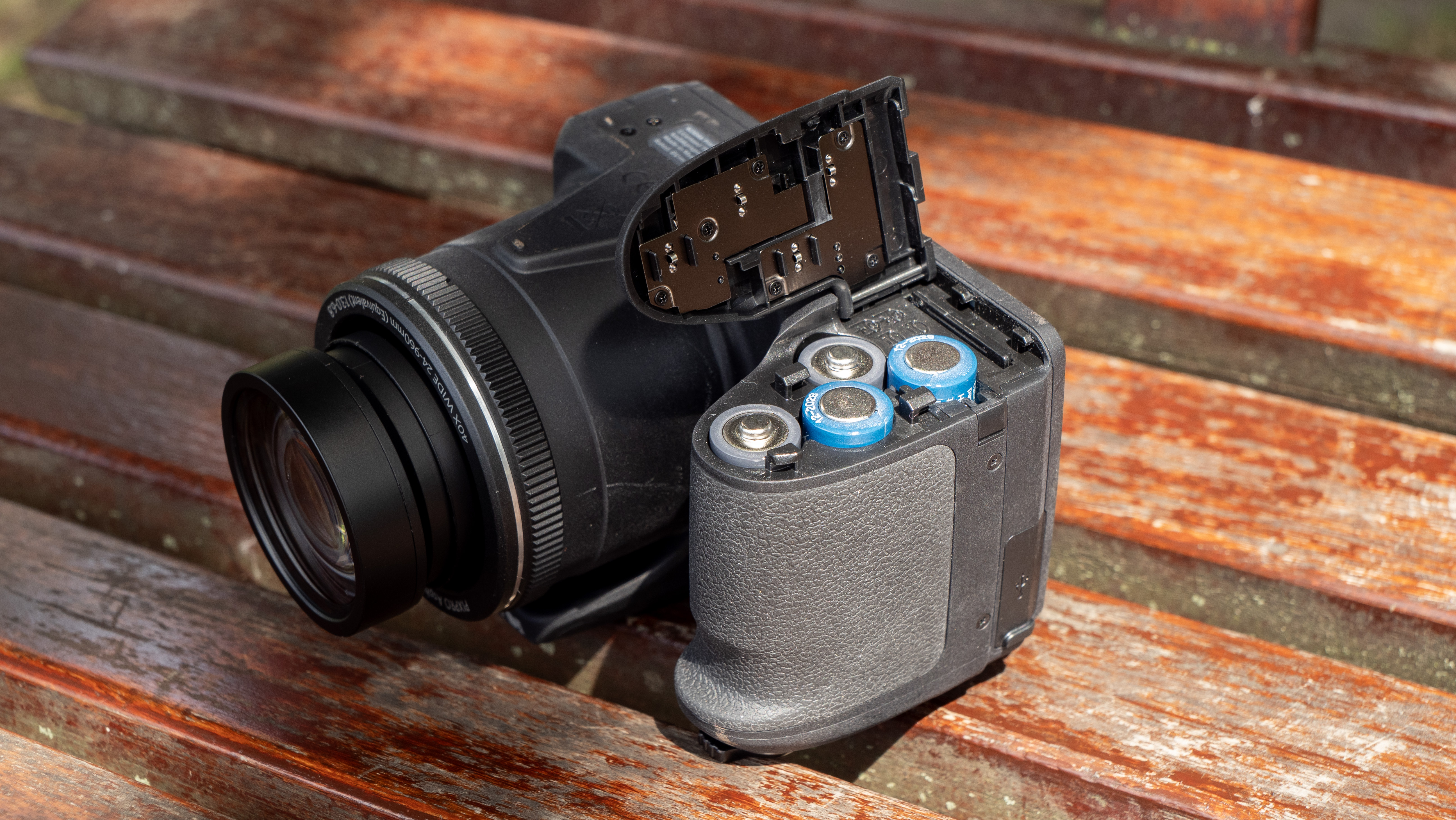
Kodak PixPro AZ405: Performance
In general, image quality from the Kodak PixPro AZ405 is worse than that which you’d find from even a mid-range smartphone in 2024, much less one of the flagship models. However, when it comes to zoom, it still beats even high-end smartphones, so really it depends on what you’re looking for – and what you’re willing to work with to get it.
When the light is very good you can get some lovely pleasing shots. When light is either too dark or too bright, the results aren’t great, with blown-out highlights and loss of detail a common problem. The lens also shows a fair degree of noticeable chromatic aberration when shooting in high-contrast situations. If you want to look at, or print, your images at A4 or above, you’ll notice these problems, but if you tend to only look at them at small sizes, it’ll be less of an issue.


In indoor and very low light situations, detail is even worse, and although you can turn on the flash, that will leave you with very harsh and garish tones which aren’t particularly appealing.
When not using the flash and shooting in a pleasing light, colors are otherwise pretty good in most situations. You might find that you get yellowish tones when shooting under artificial lighting, but you can adjust the white balance manually if you’re finding that to be a problem.
With the zoom, you can get some half-decent shots at mid-range focal lengths. Perhaps even sometimes at the full reach of the zoom. To do this, you’ll need to have a lot of patience, hold the camera as still as possible, and hope that your subject isn’t going to move very much, preferably at all. Oh and of course shoot in good, but not too bright, light. It’s good for buildings and other static subjects, but anything that moves is very tricky. I did manage to get a couple of reasonable shots of some calm geese at the local park, but I stood no chance with my erratic dog. There is a tracking focus option, but this couldn’t keep up with anything at all so it essentially may as well not be there.





Above: you can see the full zoom range of the Kodak PixPro AZ405.
Digital zoom is not worth using, not unless you really do want to get closer than 40x – which is unlikely in most cases. Macro performance is not too bad, with the possibility of capturing some nice frame-filling shots, again, so long as the subject remains still and you steady yourself too.
Full HD video recording is possible with the AZ405, but, as with images, in many situations, you’ll get better results with your smartphone.
Detail isn’t great, stabilization doesn’t work too well and autofocus struggles to keep up if you zoom in (or out again). For quick video clips it might be OK, but if you want anything of any kind of quality I wouldn’t use the AZ405 for video.


Kodak PixPro AZ405: Verdict
Overall, there’s not a huge amount to like about the Kodak PixPro AZ405, except for the price, which makes it very appealing.
It’s slow to use, doesn’t have particularly good image quality in a lot of scenarios, and can be clunky to get to grips with. If you’re used to anything better it will definitely feel second-rate, but even stepping up from a smartphone it’s likely to underwhelm compared to the ease and high performance of modern devices.
The form factor is pretty solid, and the chunky grip does give you the feeling of shooting with a “real” camera more than your smartphone will give you. But the fact that you can’t properly change settings, such as aperture, will perhaps leave those looking for a step up in their photography pretty disappointed.
Albeit not at this price point, there are much better alternatives to the PixPro AZ405. If you’re prepared to accept low image quality it’s something you might consider, but, generally, I’d recommend saving up for a little longer and spending more on something that will produce much better results. Don’t forget to check out the used market if the budget is tight.
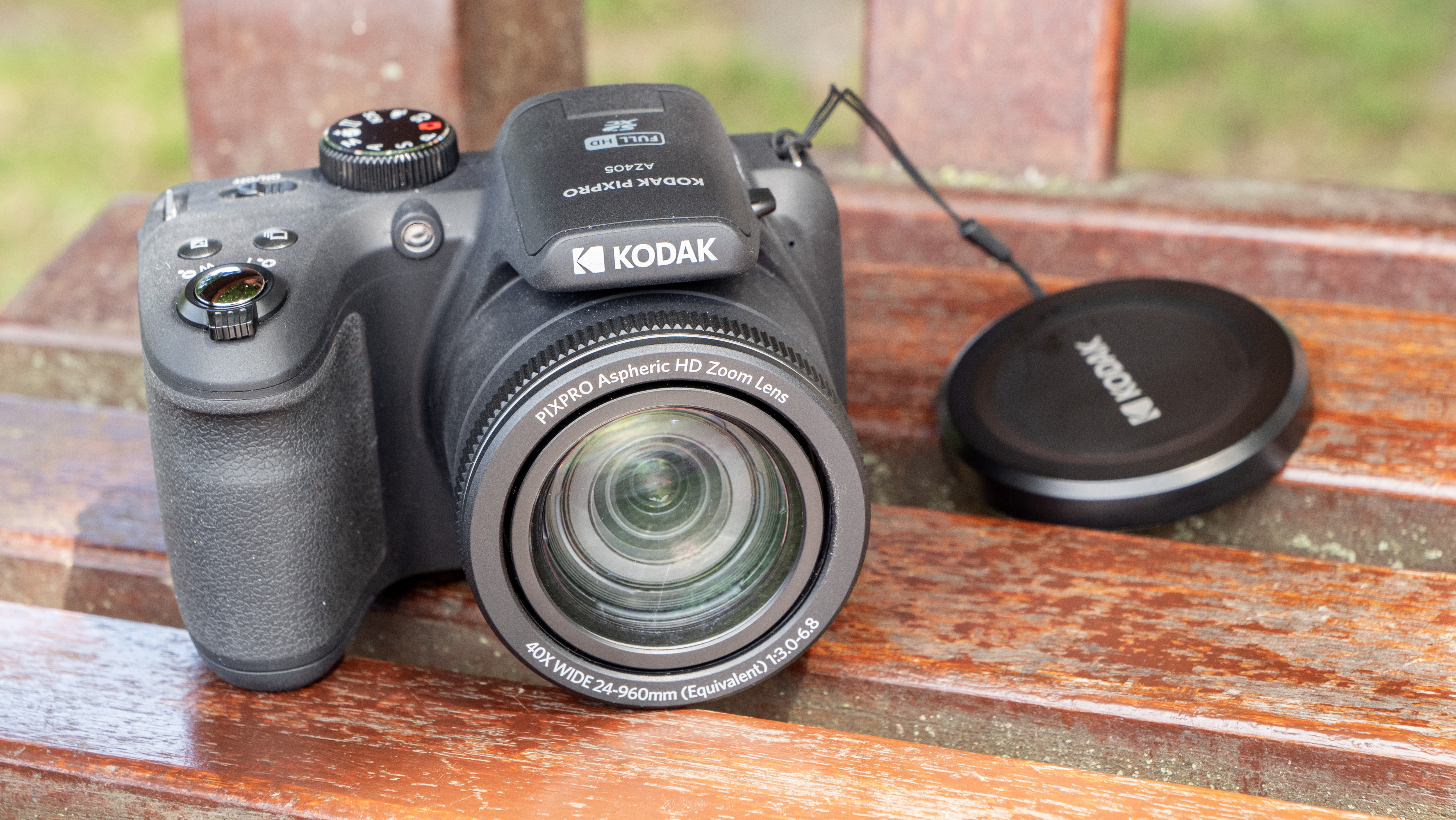
✅ Buy it...
- If you don’t have very much money to spend and are desperate for a long zoom.
- You like the look and feel of a “traditional” camera.
🚫 Don't buy it...
- You want high image quality in a range of different scenarios.
- You can possibly stretch the budget a bit further, or save up for longer. Getting a better camera will usually serve you better in the long run.







